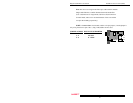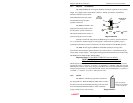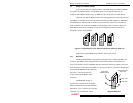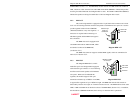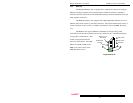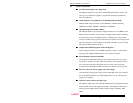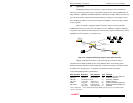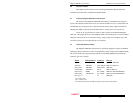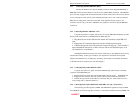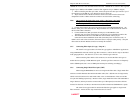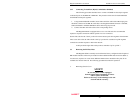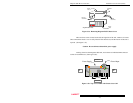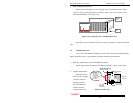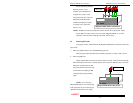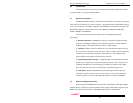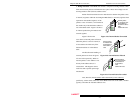
Magnum 700X Mini-Concentrators Installation and User Guide (05/98)
GARRETT
20
3.2.1 Connecting ThinNet 10BASE2 (BNC)
Connect the ThinNet coax cable to the BNC connector on the Magnum RPM-BNC or
BPM-BNC card in the same manner as is done for any standard BNC connection. The PM-BNC
port is specially equipped with an internal termination switch on the front of the card (see Section
4.1 for a description of this switch). This eliminates the need to use a "tee" connector when the
BNC cable is ending at the connection to this PM. Some applications may require a "tee"
connector, used as a tap, to allow the 10BASE2 coax segment to continue on past the PM-BNC
connection.
3.2.2 Connecting ThickNet 10BASE5 (AUI)
Using the steps below as a guide, attach a new or existing 10BASE5 ThickNet drop-cable
directly to the AUI connector on the RPM-AUI or BPM-AUI port.
1. Plug the male end of the cable into the female AUI connector on the PM-AUI
card.
2. Engage the AUI connector slide lock to insure maximum connectivity.
3. Connect the opposite end of the cable into a network AUI port. (This could be a
network backbone transceiver, a hub or fan-out with an AUI backbone port, or an
AUI module in a concentrator.)
The Magnum PM-AUI card may also used for connecting to other Ethernet devices using
standard AUI cabling. In this type of situation, it is important to consider the AUI segment
length to the attached device, including any cascading. (See Chapter 2 for detailed information
on the PM-AUI card, connector pins, and cable lengths.)
3.2.3 Connecting Drop Cable 10BASE5 (DTE)
Using the steps below as a guide, attach the 10BASE5 drop-cable directly to the DTE
connector on the RPM-DTE port.
1. Plug the female end of the cable into the male DTE connector on the RPM-DTE card.
2. Engage the AUI connector slide lock (on the cable) to insure maximum connectivity.
3. Connect the opposite end of the cable into a network AUI port. (This could be a server,
router, bridge, hub, or UNIX workstation.)
3.2.4 Connecting Fiber Optic 10BASE-FL and FOIRL (ST-type, “Twist-Lock")
The following procedure applies to FOIRL and 10BASE-FL applications using an RPM-
ST or BPM-ST card with ST-type fiber connectors. (The primary difference between FOIRL and



